References"Kinematic Factors Affecting Fast and Slow Straight and Chang... : The Journal of Strength & Conditioning Research." LWW. N.p., n.d. Web. 29 Oct. 2016. <http://journals.lww.com/nsca-jscr/Abstract/2013/01000/Kinematic_Factors_Affecting_Fast_and_Slow_Straight.10.aspx>. "Scienceofrunning.com." Scienceofrunning.com. N.p., n.d. Web. 29 Oct. 2016. "Sprinting." Strength Conditioning Research. N.p., 03 Sept. 2016. Web. 29 Oct. 2016. <https://www.strengthandconditioningresearch.com/sports/sprinting/#9>. PJF Performance Visuals: http://fellrnr.com/wiki/Overstriding NBA Broadband P3 Performance In basketball, injury is accepted as a part of the game. And, realistically, it is. However, with biomechanical analysis and close attention to detail, the risk of injury can be lessened! Check out the basics in the video above, and stay tuned for more detailed and focused explanations. References
Admin. "Landing Mechanics What, Why, and When - Maximum Training Solutions -." Maximum Training Solutions. N.p., 15 Aug. 2016. Web. 22 Oct. 2016. Fong, Chun-Man, J. Troy Blackburn, Marc F. Norcross, Melanie McGrath, and Darin A. Padua. "Ankle-Dorsiflexion Range of Motion and Landing Biomechanics." Journal of Athletic Training. The National Athletic Trainers' Association, Inc, 2011. Web. 22 Oct. 2016. Pliauga, Vytautas, Sigitas Kamandulis, Gintarė Dargevičiūtė, Jan Jaszczanin, Irina Klizienė, Jūratė Stanislovaitienė, and Aleksas Stanislovaitis. "The Effect of a Simulated Basketball Game on Players’ Sprint and Jump Performance, Temperature and Muscle Damage." Journal of Human Kinetics. Akademia Wychowania Fizycznego W Katowicach, 27 June 2015. Web. 22 Oct. 2016. "Preliminary Analysis of Knee Stress in Full Extension Landing." National Center for Biotechnology Information. U.S. National Library of Medicine, n.d. Web. 22 Oct. 2016. Struzik, Artur, Bogdan Pietraszewski, and Jerzy Zawadzki. "Biomechanical Analysis of the Jump Shot in Basketball." Journal of Human Kinetics. Akademia Wychowania Fizycznego W Katowicach, 29 Sept. 2014. Web. 22 Oct. 2016. Videos: NBA Broadband, NFL Network, P3 Sports Science Especially when playing on the perimeter, an explosive first step allows for countless opportunities to destroy your defender one-on-one. And, although many athletes are inherently explosive from a stand-still, a quick first step can be developed through proper technique and training. The Science Behind It The primary technical aspect of the first step is, rather obviously, explosiveness from a stand-still... or not. Before I go further in my explanation, imagine this: you are holding a rubber band against a table, and you are attempting to hit the table with the highest force possible. If you hold one side on the table, and simply drop the other, will the rubber band ever develop much speed or force? No. If, however, you quickly stretch the rubber band higher up a couple inches, it will shoot down at a rapid pace. This is the essence of the Stretch Shortening Cycle (SSC) of the human body. As I discussed briefly in the defensive post from last week, there are two stages of muscular contraction during movement: eccentric (the lengthening) and concentric (the shortening; generally the explosion of a jump, stride, or first step). The rapid change from eccentric to concentric creates a strong elastic force in the muscle which, again, is known as the Stretch Shortening Cycle. This is precisely why a countermovement jump, where one drops their hips and then explodes up, will always develop more force than a non-countermovement jump, where the athlete does not utilize the eccentric contraction. So, how does this relate to a first step? It's simple: if you can learn how to utilize the SSC on every first step, you will immediately add to your explosiveness from a "stand-still." How to Stimulate the SSC If you were teaching a younger basketball player how to quickly explode past their defender, you would never instruct them to first take a step back, would you? It's literally a step in the wrong direction; it will make you slower and give the defense more time to react. False. The only way to activate the SSC, which biomechanically provides more force and thus a higher rate of acceleration, is to first load with an eccentric contraction, which can be created by taking either a "negative step," "scissor step," or skip, which can be lateral or linear and many times can also be used with a cross, as seen with Russell Westbrook below. *Note: also, on the catch, a split step assists you in collecting and maintaining balance, as shown at 0:50.*
Additionally, the negative step has been proven to produce more force. According to a study performed by PJF Performance and the CSUF Biomechanics Lab, when taking a negative step, the test study created 2074.67 Newtons of force, over 1.3 times more force than when not taking a negative step (1566.07 N). Lower Position = More Efficient First Step Apart from the Stretch Shortening Cycle, there remain a few key technical points that athletes must perfect to maximize their explosiveness. And these all stem directly from the command, almost cliche, that most basketball players have heard redundantly their entire life: "be low." How many athletes actually knew why they needed to remain low when attacking or exploding? In all likelihood, very few. But when you investigate it more thoroughly, one finds that there are two main benefits in attacking from a low position. Firstly, when an offensive player is low, their strides automatically become longer and more controlled, without over-striding. When a player's shin-knee angle surpasses 90º, it becomes a deceleration position. And, taking a long first step will generally cause a player to do this... That is,
Source: PJF Performance Instagram (@PJFPerformance) NBA Broadband Account via the Free Use Policy While the best defenders have worked relentlessly in developing their technique, it is undeniable that exceptional athleticism is required. And, if we're being frank, not everyone has been given the same degree of natural athleticism. However, even those self-proclaimed "non-athletic" players can not only improve but become superior defenders through training these six aspects. 1) Baseline Strength At the end of the day, essentially all athletic performance boils down to strength. Without having the potential to produce force within your musculoskeletal system, no rapid movement is possible. In other words, while one of the larger obsessions in the performance world these days is velocity-based training, where all movements must move fast, "studies continue to support the use of slower exercise, such as resistance training, to increase faster tempo movements like sprinting" (Sparta). And, although it "seemed counter-intuitive at first, [a lack of explosiveness] could be due to lack of ability to create tension (maximal strength) initially, making [slow, maximal exercises] the best way to develop their ability to move quicker." In other words, training slow to a certain extent will allow you to move faster! However, in no way would I ever suggest that there is no place for moving fast in a defensive regimen. Increasing explosive power and the function of the stretch shortening cycle is vital to becoming a better defender... 2) Power and Reactive Strength (SSC) Defending, basketball, and athletic performance and general are all twofold: how much force you can produce, and how quickly you can produce it. This is where power comes in. The definition of power, scientifically, is (force x distance)/time--or, in English, how quickly one can expend force. If someone is able to produce an extreme amount of force but expends it over a long period of time, they will not be nearly as explosive as someone who expends it very quickly. Thus, athletes must train their muscles and central nervous system to produce force quickly. Related is the stretch shortening cycle (or reactive strength), which is the process in which an "eccentric/concentric muscular contraction produces a more powerful output than purely concentric action" (PUSH). In other words, the quick transition from the absorbing (eccentric) to exploding (concentric) motion creates an explosive function that serves as "the link between traditional strength training and high speed skill" (Sparta). To improve this, power and plyometric exercises should be performed, with low-mid reps and high rest periods. Generally, power and plyometric training increases as a regimen develops, as baseline strength must be developed prior. 3) Balance and Stability With moving fast comes the responsibility of slowing down. If unable to properly decelerate, not only will performance be hindered, but injuries will occur. In fact, deceleration and landing are the primary cause of knee ligament injuries, such as ACL and MCL tears and sprains. Since on-ball defense requires constantly stopping on a dime, stabilization must be a primary focus of any regimen. This is primarily done through eccentric, or slowly lowering, exercises in the weight room (which increase the capacity to absorb force), and sticking exercises such as one leg mini-hurdle hops that train the body to stabilize on landing. Also, defense is consistently very physical, and to be able to cut off defenders and hold your position inside the arc, you must be able to absorb contact, as you see in the video below. This generally stems from core and base stability, along with simple bulk. The core, as the most proximal muscle group, is the origin of all limb movement. The base, or rather simply leg strength, is the connection with the ground, and thus is the origin of all stabilization. And finally, rather obviously, with bulk comes weight, and with weight comes more of a burden to move. 4) Movement Work Defensive movement is a skill. While maximal and reactive strength, along with stabilization, are all needed, without the ability to move efficiently, players will never meet their full defensive potential. Thus, players must explosively train their central nervous system--muscle memory--to perform these techniques--specifically phase changes (sprinting to sliding, sliding to backpedaling, etc.), sharp cuts, and the application of the movements that they have been training for (Craig). To do this, cone drills such as shuttles, box drills, and more should be performed in order to increase coordination and proprioception, allowing for more efficient movement. However, they should not be performed for more than 10-15 seconds, or otherwise they become un-explosive conditioning exercises. 5) Reaction However, while training movement in a controlled setting (as stated above in number four) is beneficial to a certain extent and a necessity in most stages of training programs, agility drills in conjunction with reaction is the step that can take many to the next level. With pre-determined exercises, "you learn to anticipate the next move. Thus, agility training can be more effective if the athlete has to respond to a directional order" (Craig). Also, pre-determined movements do not allow for various joint and cutting angles that will occur in unpredictable reaction exercises. It makes sense if you think about it. When you defend a player on-ball, do you know exactly when they will explode, and to which direction? No! Your brain must read which movement is required, transfer the command to the musculoskeletal system, and then you move. Therefore, why not train this way, reacting to commands or visual stimulants? 6) Mobility Finally, being able to move through a full range of motion in all joints greatly benefits a defender. Firstly, defenders are able to get low and widen their base, increasing stability, as well as transitioning their body through slides, sprints, and backpedals, by mobility in their hip joints. It allows defenders to safely move through the ranges of motion that their task demands, and thus reduces the risk of injury. One muscle that must remain loose is the gluteus medius, or the hip abductor. Although this muscle does not generally contribute to lateral quickness, it can undoubtedly hinder it (Sparta). They can be released by laying a lacrosse ball.
Debunking Popular False Beliefs Contrary to popular belief, not ALL strength training for lateral quickness must mimic the movement. This is because, according to Sparta Science, at the end of the day gravity remains the opposition to lateral movement, and because getting low--a vital part of lateral movement--is in the vertical plane. So, while side lunges and other lateral lifts undoubtedly have their place in any training regimen, they should not be performed especially for someone who is training for defense. However, unilateral (one-leg) exercises should never be neglected and performed frequently. Also, the notion of "quick feet" is actually a flawed theory. Having "quick feet" is actually a result of the athlete producing a significant amount of force into the ground, and thus--through the "reaction force"--the ground propelling them laterally. Exercises for Each (More on the way) 1) Deadlifts (trap bar, barbell, etc), Squat/Tempo Squats, RDL's, RFESS, Step-Ups, Front/Reverse Lunges, Side Lunges, Sled Pulls/Pushes, etc. 2) Power: Olympic Lifts (hang cleans, hang high pulls, etc), Medicine Ball Alternatives, etc. Reactive Strength: Plyometrics such as broad jumps, depth jumps, split jumps, box jumps, etc. 3) Deceleration: sticking exercises such as single-leg mini hurdle hops with a stick, eccentric/tempo exercises where the lowering portion is 4-5 seconds and the explosion up is quick. Core strength and stability can be improved in a number of ways (more later), and base strength is obtained in number one. 4) Cone drills such as shuttles, box drills, and more on this site: https://kingsportstraining.com/blogs/training-blog/8269753-10-best-speed-and-agility-cone-drills/ 5) Reaction drills such as tennis ball explosions, mirror drills, or any creative drill that adds visual or auditory cues to agility exercises. 6) Hip mobility: Myofascial release (foam rolling, lacrosse ball release, etc), dynamic and static stretches of the hip flexor muscles, hamstrings, quads, gluteus medius and maximus, and more. Ankle mobility is also required (See triple extension article). Also, fire hydrants, scorpions, and bridges. Sources: https://www.nsca.com/uploadedFiles/NSCA/Resources/PDF/Education/Articles/NSCA_Classics_PDFs/scientific_basis_of_speed_and_agility.pdf http://spartapoint.com/2012/10/31/play-better-defense-why-the-vertical-explains-it-all/ http://spartapoint.com/2015/07/20/train-slower-to-move-faster/ http://spartapoint.com/2012/09/05/why-you-should-not-move-fast/ http://www.stack.com/a/deceleration http://www.trainwithpush.com/blog/reactive-strength-index-revisited http://spartapoint.com/2012/10/22/the-ultimate-combo-strength-and-speed/ http://www.stack.com/a/strength-power-training http://ericcressey.com/the-great-eight-reasons-for-basketball-mobility-training http://www.stack.com/a/basketball-movement-drills Chances are you have not heard of Muscle Activation Technique (MAT). But, athletes such as Peyton Manning and Matt Forte are huge advocates, among countless others who utilize this tactic on a daily basis. But, as a relatively new breakthrough in the realm of performance and injury prevention, many remain unaware.
Essentially, MAT identifies and repairs muscle imbalances, which are the origin of innumerable non-contact injuries daily. If you consistently train and perform at high speeds, your minute imbalances will worsen, eventually resulting in joint and muscle strain, deterioration, and, in due time, serious injury. These imbalances occur when the length and strength of muscles on opposite sides of the bodies (side-to-side) or antagonist muscles (front-to-back), are unequal, and thus extra stress is placed on the joints or muscles of one side. This stress is either compensated for by other joints or muscles, which causes pain (for example, if the ankles are not as mobile, the knee will have to compensate and thus pain will be causes), or the imbalance will result in injury. To repair these imbalances, MAT follows a three step process. First is a range of motion test. In this test, if any asymmetrical range of motion is observed, every muscle that is associated with the asymmetrical movement identified in the ROM test is tested individually. This is step two. If any muscles are identified as "weak" in this test, which generally is composed of holding the limb in a position that requires strength from the muscle and observing the efficiency and ability of the movement, then it is assumed that this muscle is not recruited sufficiently by the nervous system. If a muscle does not receive proper signal from the nervous system, which can occur for a number of reasons, then it cannot receive neural signals and thus its force-producing ability is impaired. By applying light force at certain muscle connection points, the neural signal can be restored, allowing the nervous system to recognize it again. The muscle is then retested, and generally, it will perform much better. MAT has demonstrated the ability to show immediate results. Not only does injury risk drop significantly, and pain subsides or even vanishes, but performance benefits have been observed directly after treatment. In fact, according to muscleactivation.com, a pitcher has been recorded at 10mph faster than just previous to their MAT treatment! As a relatively new technique, there is still much to be discovered about MAT, but also much uncertainty. For now, though, it seems undeniable that Muscle Activation Technique has a good amount of value in preventing injury and boosting performance. Sources http://www.healthyprogresstraining.com/content/mat/how-it-works.html https://muscleactivation.com/latest-news/the-athletes-edge-taking-performance-to-the-next-level-2/ http://www.muscleimbalancesyndromes.com/what-is-muscle-imbalance/ Unless you are a psychologist, I'm sure you have never heard of Non-Conscious Behavior Mimicry. But, it could be one of the keys to improving your basketball game. Basketball is truly a game of inches. Every movement matters, every situation requires a meticulous attention to detail and perfect execution. NBA players, college players, and even elite high school players are adept at all of this, which is why they are at the level that they are. So, if you're trying to expand your skill set, why not learn from these players? Here's where Non-Conscious Behavior Mimicry comes in. Essentially, this phenomenon states that when one observes another do something enough, they will eventually mimic it, without even knowing it (citelighter.com). This is why many sons and fathers share characteristics, but also why many basketball players shoot, dribble, or make decisions similar to their favorite players'. So, if just by watching great players play enough, you could "mimic" their play and thus slightly improve yours, why wouldn't you? This is just one of the many benefits of watching film. Granted, you cannot significantly improve your skills by watching a screen, however you can gain a huge advantage. By watching film of high-level players--and not just watching for highlights; you must actually study every second--you can understand how these players have gotten successful. Looking at their footwork, body positioning, decision making, how they set up moves, defensive positioning, what tricks they use to get steals, and so much more. There are two main ways to do this. First is watching full games. We understand, however, that this is time-consuming, and the games that you do sit down and watch in their entirety are generally big games that you would like to watch from a fan's perspective. If you are willing to study each movement during Game 7 of the NBA Finals, then great. That's a huge advantage. If you would rather watch from a fan's perspective, at least attempt to watch replays of games (or even quarters of these games), because full games, unlike highlights, show the entire story. In fact, many times mistakes, mundane plays, and defense are just as beneficial to watch as the top plays, because these are the things that truly separate the good and the great. This is also why teams and players should watch their own games (especially losses or poor games). It is much easier to correct a mistake in the future when one has a full, clear idea of what they have done and how to fix it (Which is hard to come by without watching yourself fail. It's easy to watch yourself when you look good!) If you do not have enough time to watch the entirety or parts of full games (by the way, summer league games, matchups between mediocre NBA teams, and mid-major college games are just as beneficial if not more, because there are players similar to the majority of the basketball population), highlights still are undoubtedly beneficial. Just make sure you are watching for the right things... How to Watch Film First, realize what/who you are watching. Know what each player or team does well, or does not do well. For example, if you're watching a Michigan State team, realize how well they rebound (generally). If you're watching Tyler Ulis Kentucky film, understand prior to watching how well he changes pace and controls the game. If you're watching Stephen Curry, know to look for how he reads the defense and uses his body to get to his shots. Next, as you begin to watch, break down each play in your mind or in notes. Go through plays in slow motion. Watch players' feet, body positioning, and decision making over and over again. Then, analyze it. What situations do they make certain decisions in? How could they improve something? How could you implement it into your game? Or, if it is your film, how could YOU improve? Really, from there, there are many possibilities. You can keep track of certain shots or plays in a notebook or shot chart, such as the one below of Kyrie's shot chart in the finals... Then, you could build a workout around your findings (for example, if you believe you have a similar skill set as a certain player, note their shot chart, most used moves and what makes them effective, etc, and then work on those things). You could visualize doing them in game. The opportunities are limitless. But, the point is, if you truly want to get better at basketball, then why not relentlessly watch the elite players like you relentlessly work on your game? It's common sense.
Resources For Watching Film NBA Game Highlights/Compilations: www.youtube.com/channel/UCEjOSbbaOfgnfRODEEMYlCw College Highlights/Compilations: www.youtube.com/channel/UC2ZtDh_fAYM4UYzg-xD-t9w/videos NBA TV (Summer league, replays of vintage games and playoff games, etc) Highlights for non-superstar players/compilations: www.youtube.com/user/DownToBuck/videos Krossover/Hudl as team highlights resources Sources https://www.citelighter.com/science/psychology/knowledgecards/nonconscious-behavior-mimicry What does every athletic movement have in common? What do sprinting, grabbing a rebound, shooting a jumper, and blowing by a defender have in common? Triple extension. Quite simply, triple extension is the simultaneous (well, actually sequential, separated by milliseconds) extension or, potentially, locking, of the ankle, knee, and hip joint. If every athlete can maximize each of these extensions, the chain will move much more explosively as a whole, thus placing more force into the ground and propelling the athlete forward or vertically at a higher rate. How Does This Work? When you truly think about it, triple extension is not very complicated biomechanically. If you lock out your joints, your posterior muscles (gluteus, hamstrings, and soleus, particularly) transfer energy more efficiently and powerfully, which makes sense because you are fully contracting your muscles concentrically. Because of the sequential contractions, the distal joints (knee and ankle) can produce more force than if they were isolated. In other words, the joint(s)/muscles above the knee and ankle provide an additional power source, which for example allows the ankle to produce 6 times as much force than in isolation (UMass). Additionally, because your lower-body posterior muscles are some of the most powerful in the body (particularly the gluteus maximus and soleus), it is important to expend as much force from these muscles as possible. Let's take a closer look at how this works in various movements. In sprinting, your hip extends first, providing not only power from the gluteus but balance to take the simultaneous step. Then, the knee locks to expend power from the quadriceps, and finally the ankle plantarflexes to help propel off of the ground with the soleus. Check out the clip below for a graphic. In a vertical jump, triple extension acts in a very similar method, but in the vertical plane. Check out the video below for a graphic. Injury Prevention
In addition to improving performance, the concept of triple extension is very important to the prevention of ankle, knee, and hip injuries in explosive sports, particularly basketball. Primarily, one must ensure that these joints can move efficiently throughout the entire range of motion, or else one cannot fully extend, and if they do, injuries are bound to occur. Thus, ankle and hip mobility exercises are vital (as they are free-moving ball and socket joints), as well as making sure that the surrounding muscles (gastrocnemius, soleus, gluteus, quadriceps, and even hamstrings, hip flexors, and abductors/adductors) are not dangerously tight. Also, when you understand that the hip, knee, and ankle joints work sequentially to perform explosive movements, you can understand why ensuring that each is effective in its movement. Otherwise, the other two joints take a beating, especially the closest proximal joint (above). For example, when the ankles cannot plantarflex effectively, the knees must make up for it, spiking the injury risk for tears and overuse injuries such as tendinitis. How To Train Triple Extension In maximizing one's ability to extend at all three joints, you simply want to focus on movements that are biomechanically similar and mimic the sequential extension. There are two ways to do this (both of which must be implemented into a training program): (1) isolating and strengthening the extension of each joint, and (2) performing exercises that include all three. For example, deadlifts (particularly hex/trap bar deadlifts) primarily strengthen the hips' ability to extend--these are especially important due to the huge amount of strength in the gluteus. However, this is still a compound exercise, meaning that it includes more than one joint. This is something to make sure that most of your exercises involve (squats are another great one) The second part, exercises that extend at the hip, knee, and ankle simultaneously, can be accomplished through strength/explosiveness exercises (explosive step ups with ankle extension, explosive squats to presses, tire flips, kettle bell swings and variations, etc), plyometrics (box jumps, non-countermovement jumps, etc), and olympic lifts (cleans, snatches)--which are more advanced. On all of these, though, focus on extending all three joints powerfully, and it will bring you to your maximum potential. Sources: http://www.umass.edu/locomotion/pdfs/scj-1998.pdf Whether it's spent working out, playing videos, scrolling through Twitter, or at a social event, many times one of the most productive times of the day is wasted! The time being referred to is late night and early morning: the time the body is programmed to sleep.
Throughout the night, the body goes through 90-120 minute cycles of REM, or Rapid Eye Movement, sleep. During these stages, muscles are completely relaxed and do not move, while dreams generally occur. Through an entire night of sleep, especially during these REM cycles, seemingly countless processes take place, effecting both the mind and body. The first benefit to the mind is memory consolidation, which is essentially the concreting of skill, information, and muscle memory. So, if you are working on your basketball skills, without sufficient restorative, deep sleep (periodic one-hour naps are not considered deep sleep) is required (howsleepworks). Also, focus and decision making are notably hindered the following day, and extreme sleep deprivation is proven to cause mental effects equal to being legally drunk (CBS). Finally, sleep deprivation can lead to higher cortisol levels, a hormone that considerably raises stress in most humans. Effects on performance are also very significant. HGH, or human growth hormone, is released as one sleeps (Sparta). HGH is associated with the regeneration of muscles at a cellular level, which means that recovery and muscle synthesis peak during sleep. It has also been proven that not only does a lack of sleep disallow the body to recover from the previous day's workout(s)--which in effect builds muscle, skill, etc--but the next day's as well. Additionally, it puts one at risk for higher fatigue in the following days (NSF). In a renowned study by Stanford researcher Cheri Mah, the sleep of 11 elite college basketball players was extended. By the end, "the players ran faster 282-foot sprints (16.2 seconds versus 15.5 seconds) than they had at baseline. Shooting accuracy during practice also improved: Free throw percentages increased by 9 percent and 3-point field goal percentage increased by 9.2 percent" (Mah). This can also be viewed through an NBA lens, where players and teams such as the Golden State Warriors and Andre Igoudala are taking sleep analysis to the next level. Research is actually "beginning to show correlations between sleep debt and statistical production, and some studies have begun to connect the dots between sleep and injury rates" (CBS). For example, Igoudala's stats with eight hours of sleep did the following: +29% in points/minute +9% in free throw percentage +2% in three point percentage -45% in fouls committed -37% in turnovers committed Obviously, there is a strong correlation there between decision-making, motor skills, and basketball skill. Sometimes, it is difficult to get a full, good night's sleep. So, how can you? Primarily, alter your environment to your advantage. Studies have shown that a dark, quiet, and cool environment results in better and more sleep (according to ninds.gov, "people lose some of the ability to regulate their body temperature during REM, so abnormally hot or cold temperatures in the environment can disrupt this stage of sleep"). Also, eating inflammatory foods, "such as those containing trans fats or those fried in toxic, hydrogenated oils," prior to bed may harm sleep quality (CBS). Other ideas include sticking to a relatively regular sleep schedule--going to sleep and waking up at around the same time every day--as well as tracking sleep as a means to ensure proper sleep, the number of which alters for all, but is generally above 8 hours. Without these 8 hours, you lose the most important part of the night! "REM sleep, necessary for cognitive repair and decision-making, occurs in the latter stages," generally the last two hours of an 8-hour night of sleep. You can track your sleep with apps such as sleep cycle, or wearable devices such as Jawbone technologies (jawbone.com/support/articles/000008210/tracking-sleep-up24). In the words of former Navy Seal turned NBA sleep advocate Kirk Parsley, "we live in a culture that doesn't value sleep. It's often associated with laziness, lack of motivation, all sorts of negative connotations for somebody who sleeps excessively -- and all sorts of accolades and idolization for people who claim to sleep three or four hours a night. You have to get past that prejudice." Even LeBron James, Kevin Durant, and more attribute much of their success, especially in recovery from thousands of minutes played, to sleep. So, as long as you're working sufficiently on your skills and performance, sleep can take your game to the next level. Sources https://sleepfoundation.org/sleep-news/sleep-athletic-performance-and-recovery (NSF) http://www.cbssports.com/nba/news/in-multi-billion-dollar-business-of-nba-sleep-is-the-biggest-debt/ (CBS) http://www.howsleepworks.com/types_rem.html (howsleepworks) http://spartapoint.com/2013/06/12/is-sleep-more-important-than-nutrition/ (Sparta) https://www.sleepassociation.org/patients-general-public/what-is-sleep/ (ASA) https://med.stanford.edu/news/all-news/2011/07/snooze-you-win-its-true-for-achieving-hoop-dreams-says-study.html (Mah) |
Coleman AyersFounder/Owner of By Any Means Basketball Categories
All
Archives
September 2020
|
|
By Any Means Basketball is a Miami, Florida-based basketball and athletic performance training organization, centered around using science-based training methods to optimize performance and shift the global basketball culture.
Email: info@byanymeansbball.com Twitter: @byanymeansbball Instagram: @byanymeansbasketball YouTube: By Any Means Basketball Privacy Policy |

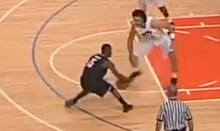
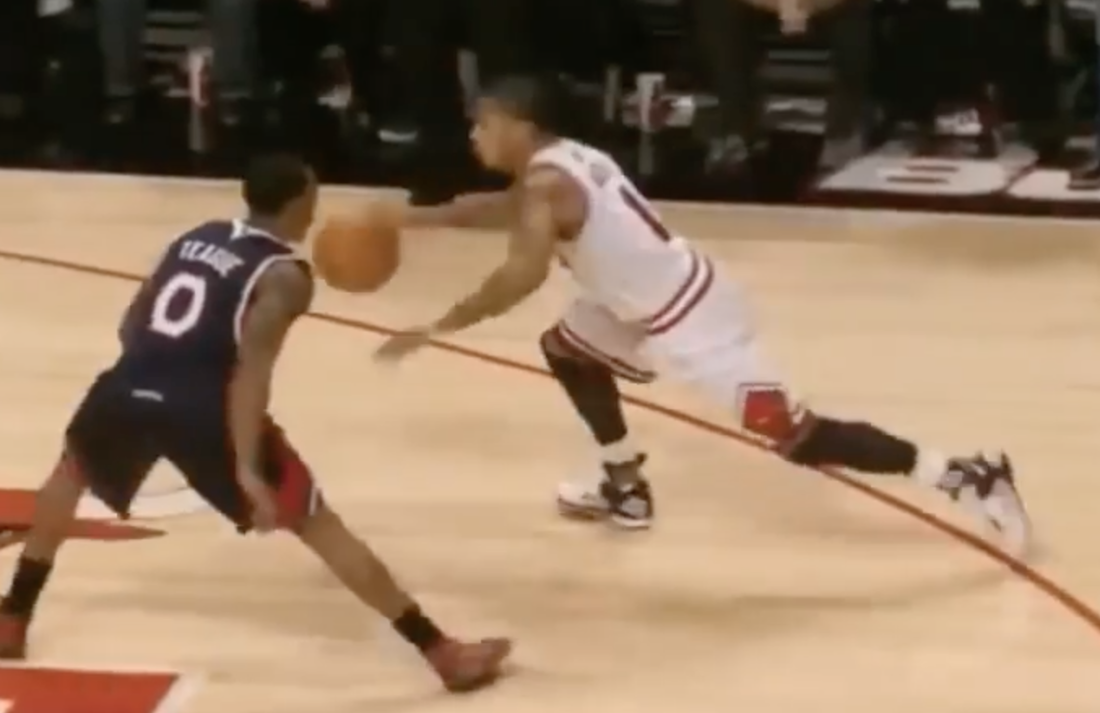
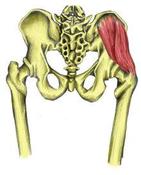
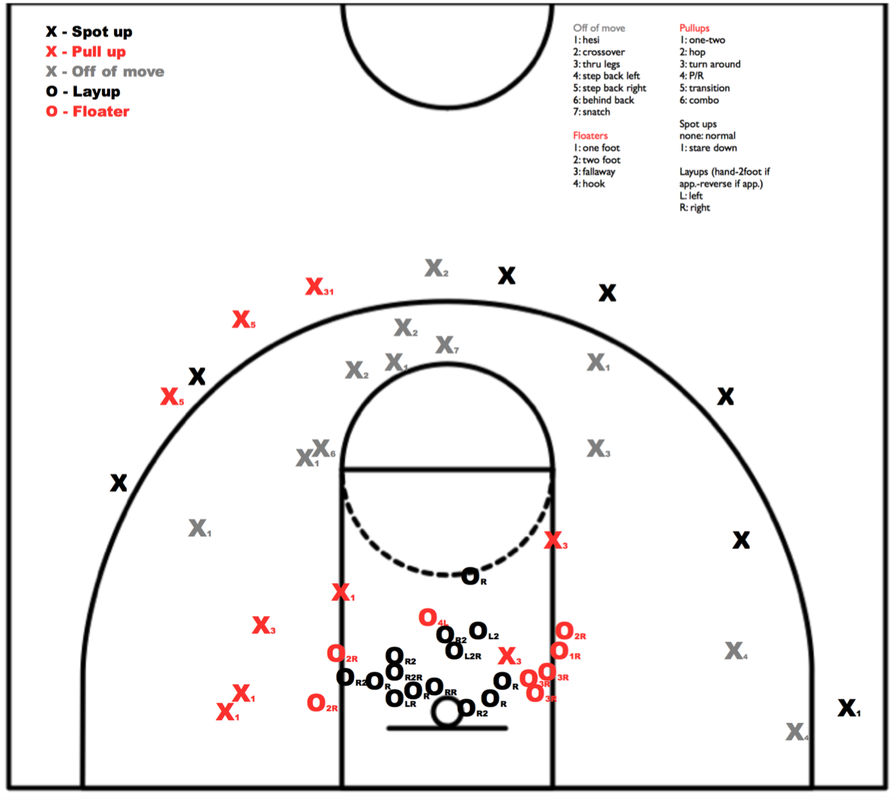
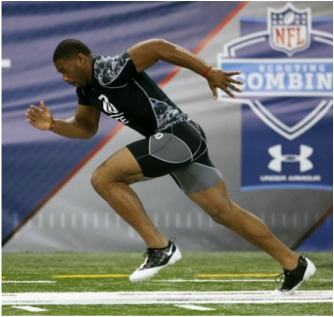
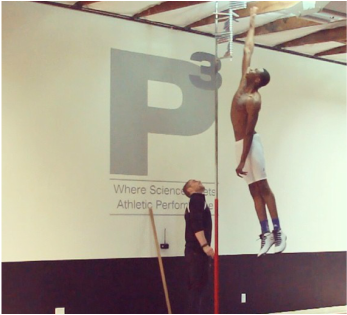
 RSS Feed
RSS Feed
